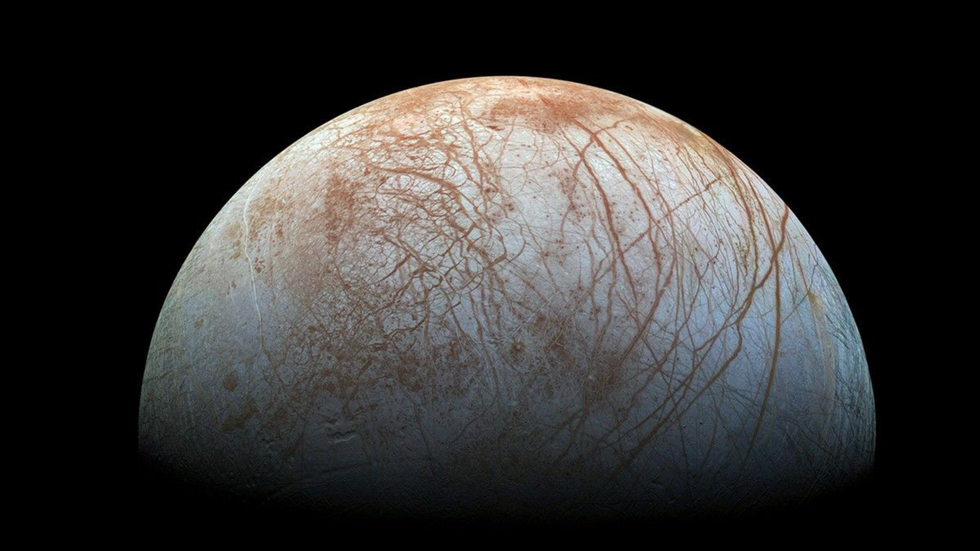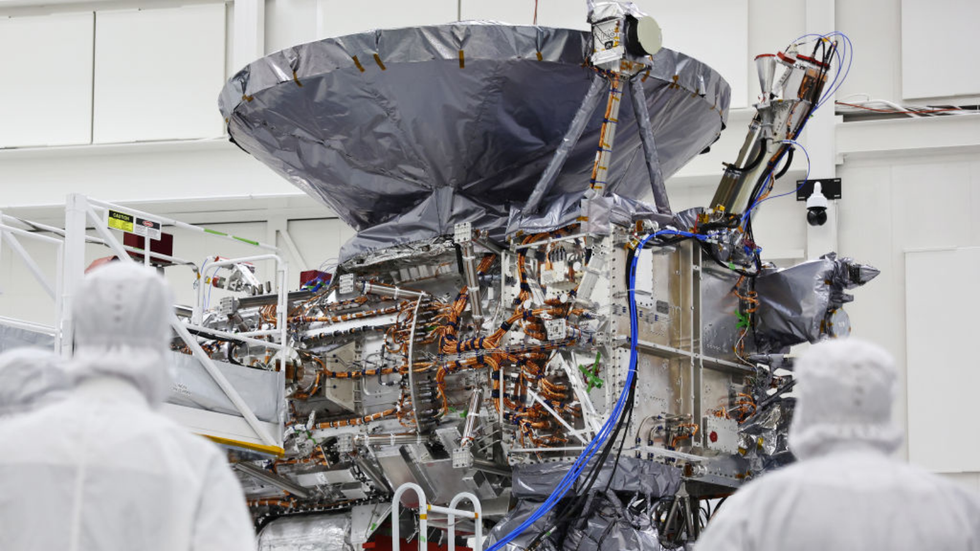Newly discovered nearby giant gas planet may have moons capable of life
The similarities shared between the planet's star and our Sun are raising excitement amongst scientists
Don't Miss
Most Read
Scientists have found strong evidence of a giant gas planet which could have habitable moons in the nearest star system to our own.
The lifeless planet is thought to be four-and-a-half light years away, meaning it would be a close neighbour to Earth in astronomical terms.
Evidence for the planet was found by the James Webb Space Telescope.
**ARE YOU READING THIS ON OUR APP? DOWNLOAD NOW FOR THE BEST GB NEWS EXPERIENCE**

PICTURED: The James Webb Space Telescope being launched
|GETTY
Although the potential planet was originally first detected last year, it later disappeared in follow-up searches.
Now, astronomers are checking once again to see if the planet does exist in the Alpha Centauri star system.
There is particular excitement about this discovery because the exoplanet's star and our Sun share similarities.
Dr Carly Howett, Associate Professor of Space Instrumentation at the University of Oxford, said: "It is around a star that is Sun-like and about the same temperature and brightness.
"That's really important if we want to think about habitable worlds."
The planet would be covered in a thick gas cloud, similar to Saturn and Jupiter.
While this means the planet itself could not support life, it could have moons which are habitable.
Jupiter, as well as some other planets in our solar system, have icy moons which scientists believe could support life.
LATEST ON SPACE:

Missions are currently underway to see if Jupiter's moon Europa (PICTURED) is hospitable
|NASA
Research missions called Europa Clipper and Juice are currently underway to investigate this possibility.
However, the planets in our solar system which could have moons supporting life are far away from our Sun.
In comparison, the "new" planet is close to its star.
Discussing the signs of the potential planet, Charles Beichman from Nasa's Jet Propulsion Laboratory said: "These are incredibly challenging observations to make, even with the world's most powerful telescope, because these stars are so bright, close, and move across the sky quickly."

PICTURED: The Nasa Europa Clipper spacecraft
|GETTY
The large amounts of bright light created by stars can block out nearby objects.
This could explain why the planet was detected once in August 2024, but then seemed to disappear.
Howett said: "Probably the planet was either behind the star or too close to be able to see it. You need an element of luck."
Scientists hope to use the new Nasa telescope - the Grace Roman Space Telescope - to look for more signs of the planet when it comes into use in 2027.
Through the use of spectral imaging, astronomers should be able to learn what the planet is made up of, and how habitable orbiting Moons could be.










